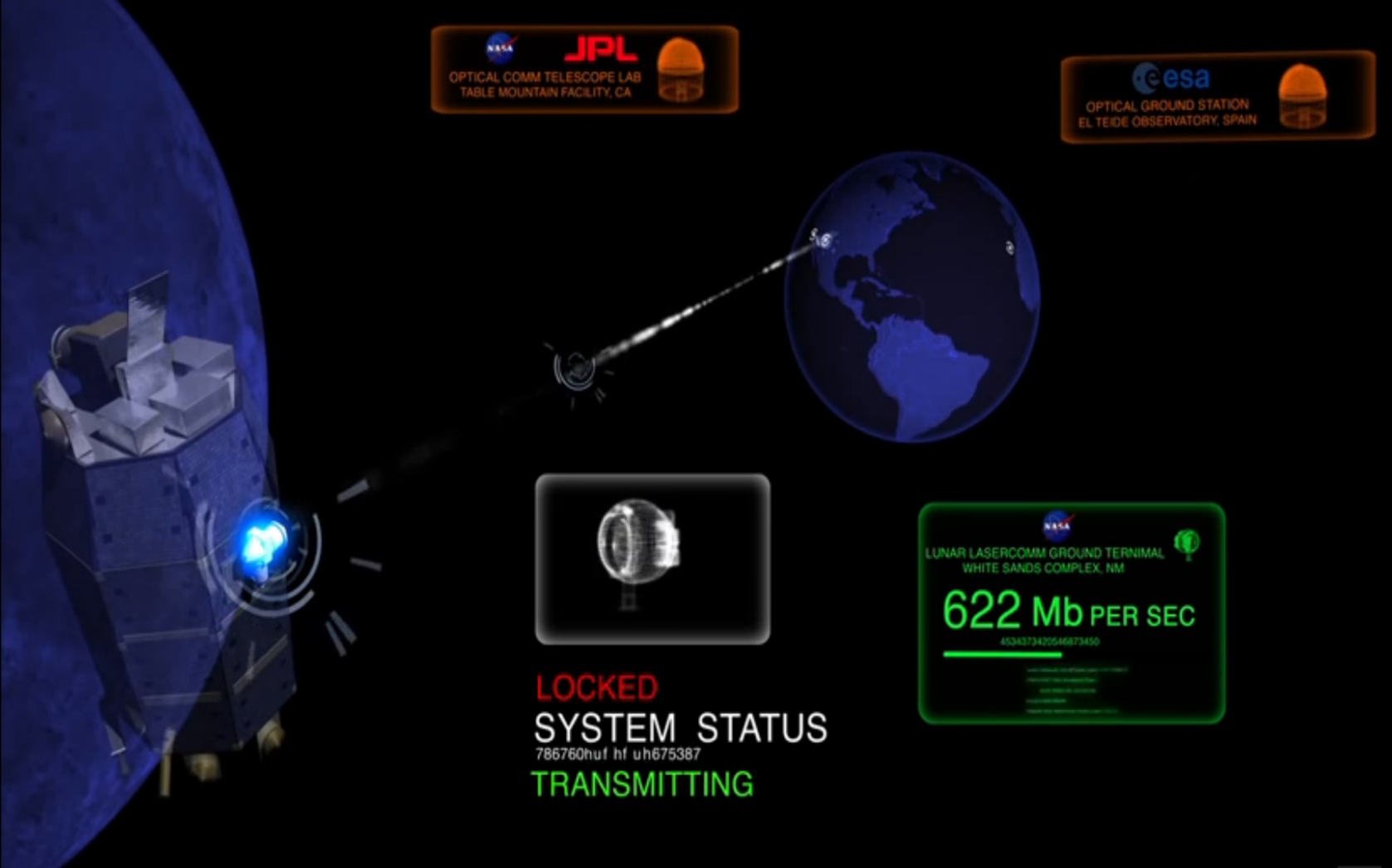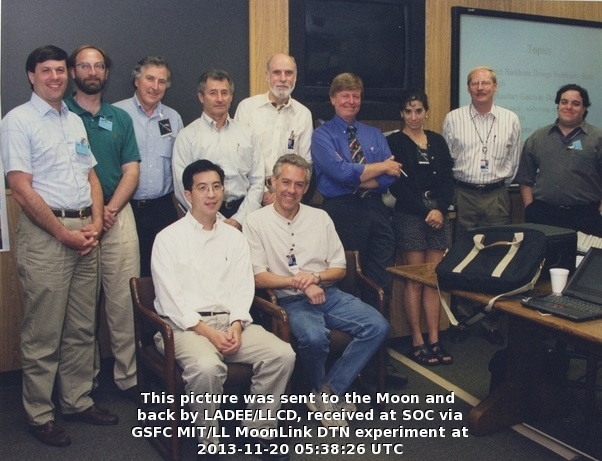The Lunar Laser Communications Demonstration (LLCD) is one of the instruments on the Lunar Atmosphere and Dust Environment Explorer (LADEE), which was launched from NASA’s Wallops Flight Facility on September 6. On October 18, LLCD made history by transmitting a pulsed laser beam from the Moon to the White Sands Complex in New Mexico at 622 megabits per second (Mbps) – more than six times faster than traditional radio signals.
In the days since, LLCD has performed a number of different experiments including: sending signals to the European Space Agency (ESA) station in the Tenerife, Canary Islands, sending LADEE’s entire spacecraft and science data to the ground, and testing how the laser beam will react during the Moon’s different phases. One of the lesser known experiments happened in mid-November where Disruption Tolerant Networking (DTN) was incorporated in the experiments. DTN is a step towards an interplanetary or space internet that seeks to improve communications by storing data when a connection is interrupted and forward it to its destination through the use of relay stations or nodes.
The LLCD/ DTN experiment utilized a virtual lunar relay scenario, complete with three lunar surface users, a lunar relay, an Earth ground station, and user control centers. Each user node transferred data utilizing a method of bundling similar bulk data called the DTN Bundle Protocol. The real optical links between LLCD and the Lunar Laser Ground Terminal (LLGT) in White Sands, NM carried the lunar relay trunkline traffic of DTN bundles. This was the first ever demonstration of DTN bundle protocol and point to point deep space transmission known as the Licklider Transmission Protocol (LTP) over spacecraft optical links. These DTN protocols provided reliable data transfer over the optical links, even when cloud outages occurred. Optical links do not favor well in cloudy weather, as the mist interrupts the narrow beam.
The demonstrations also included the transfer of files using the international standard of the Consultative Committee for Space Data Systems (CCSDS) File Delivery Protocol (CFDP) over the DTN protocols. Various image files were used for the test, including photos from the early meeting days of DTN and several photos of one of DTN’s biggest proponents, Adrian Hooke, who passed away in January 2013.
For more information about the demonstration, please contact:
David Israel
Goddard Space Flight Center
david.j.israel@nasa.gov
› Optical Communications
› Disruption Tolerant Networking
› Consultative Committee for Space Data Systems
› SCaN remembers a fellow colleague, Adrian Hooke
› View SCaN Latest News Archive




























